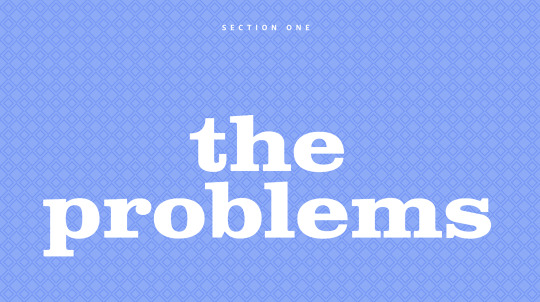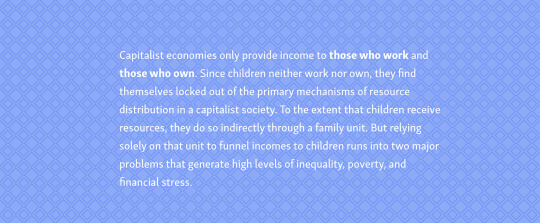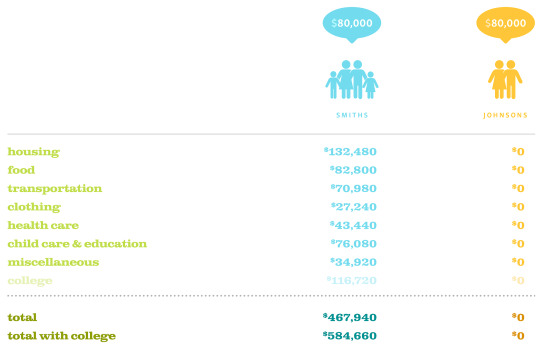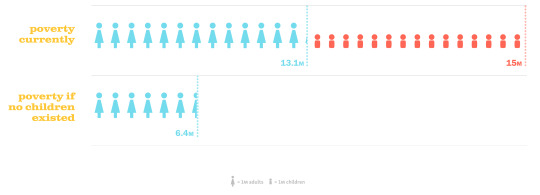#economic times classified ad
Explore tagged Tumblr posts
Text
Discover Endless Opportunities with Economic Times Classifieds!

#economic times classified#economic times classified ad#economic times advertisement#economic times ad booking#book ad in economic times#classified ad in economic times#et classifieds#et classified ad#et classified ad booking
0 notes
Text
Unlock Unmatched Visibility with Advertisements in The Economic Times

#ad on economic times newspaper#economic times ad#economic times advertisement#economic times classifieds#economic times newspaper ad booking#book newspaper ad in economic times#economic times newspaper advt#economic times newspaper advertisement#et advertisement#et advertising#et ad booking
0 notes
Text
Unlock the Power of Economic Times Classifieds: Reach Your Target Audience!

#ads on economic times newspaper#book et classified ad#economic times ad#economic times advertisement#economic times classified#economic times classified ads#economic times classified advertisement booking#economic times classified booking#economic times classifieds#economic times newspaper ad booking
0 notes
Text
President Volodymyr Zelensky unveiled a “resilience plan” for Ukraine in a parliamentary address on November 19, marking a thousand days since Russia began its full-scale invasion of the country.
“Ukraine was and will remain an independent state with its own destiny. And Ukraine will determine for itself how to live now and in the future,” Zelensky said. “Ukraine has earned the right to this. But in order to be able to realize this right, we must endure now. We must not collapse now. So that the occupier collapses, not us. We need internal resilience.”
The unveiling of the “resilience plan” comes about a month after Zelensky presented a “victory plan” to Ukraine’s parliament, which some opposition lawmakers criticized for its focus on requests to international partners and failure to address domestic issues.
“In every war, to avoid defeat, there are things that the people themselves can do, and there are things that can only be achieved through unity with allies. That is why these two documents are essential,” Zelensky told the parliament on Tuesday. “And our internal unity must always be strong enough to unite our partners as well.”
The 10-point ‘resilience plan’
In his speech, Zelensky outlined the following 10 points aimed at strengthening Ukraine’s internal resistance, though he noted some of them will remain largely classified for security reasons.
Point 1: Unity
Referring to both domestic unity and “unity with allies,” Zelensky called for accelerating E.U. integration and an immediate invitation for Ukraine to join NATO. He also underscored the need for “information consolidation” and “external justice for Ukraine,” including a tribunal against the Russian Federation, the confiscation of Russian assets, and effective sanctions.
Point 2: The Front
Zelensky outlined changes in Ukraine’s approach to personnel management, mobilization and recruitment, and general training in the Armed Forces. At the same time, he assured that Ukraine is not planning to lower the mobilization age. Zelensky also said that Ukraine is planning “very specific measures to stabilize the front” and will carry out “necessary operations” in the occupied territories and against military targets in Russia.
Point 3: Armament
Ukraine will continue to expand its domestic production of artillery systems and shells, as well as drones, Zelensky said. This includes plans to produce at least 30,000 long-range drones next year and at least 3,000 cruise missiles and missile drones.
At the same time, Zelensky underscored that Ukraine needs to “surpass Russia in technology,” attract investment into its military-industrial complex, and ensure the security of defense enterprises. “Even without nuclear weapons, we can find conventional instruments of deterrence,” he said. “Our weapons will always be our first guarantor.”
Point 4: Money
In order to retain its basic resilience, Zelensky said, the Ukrainian economy needs a new economic policy based on three key things:
Maximum support for Ukrainian entrepreneurship, localization, and domestic production;
Security of doing business and reduced pressure on entrepreneurs from excessive regulation;
Maximum and legal employment (or, as Zelensky put it, “de-shadowing”).
“The other side of Ukraine's economic strength is the ability of the state to fulfill its obligations, especially social ones,” he added.
Point 5: Energy
Zelensky described “Energy” as “the most classified” point of the resilience plan, “because of Russia's criminal intent to plunge Ukraine into a blackout.” Ukraine’s task, he said, is to protect its energy facilities and power grid, decentralize electricity and heat generation, manage energy consumption, and lay the groundwork for establishing the country as an energy hub post-war.
Point 6: Security
Referring to internal security in Ukraine’s cities and communities, Zelensky outlined plans to combat crime, secure public spaces and educational institutions, build and upgrade shelters, and carry out demining work. “The steps we are taking during the war to ensure internal security are only partially disclosed,” he noted.
Point 7: Communities
Underscoring the importance of “highly effective governance within communities,” Zelensky called for increased collaboration between communities within Ukraine, as well as international engagement at the community level. He also noted that certain communities — such as cities near the border with Russia and towns trying to integrate large numbers of displaced people — need tailored measures.
“We must not forget our communities that are currently in temporarily occupied territories,” Zelensky added. “Ukraine must be prepared at all levels to restore control over its entire territory at the right time and through the right actions.”
Point 8: Human Capital
Ukraine needs to create all the necessary conditions for every citizen to “truly identify” as Ukrainian and “work in, with, and for” their country, Zelensky said. The annexes to this point in the resilience plan will cover Ukraine’s policy on recovery, a national standard for accessibility, education, social policy reforms, and policy regarding religious organization, he explained.
Zelensky also said that Ukraine needs to allow dual citizenship, reboot its diplomatic service, and strengthen its policies concerning Ukrainians abroad. Accordingly, he announced plans to establish a Ministry of Ukrainian Unity, tasked with focusing on the affairs of the Ukrainian diaspora.
Point 9: Cultural sovereignty
In an effort to reinforce Ukrainian culture at home and promote it abroad, Zelensky’s government plans to launch a “cultural Ramstein” forum, he said (akin to the Ramstein Group in the defense sector). Zelensky also underscored the importance of the “deliberate and systematic creation” of Ukrainian content “capable of fully replacing Russian content” and the need to hold Russia accountable for crimes against Ukraine’s cultural heritage.
Point 10: The Heroes Policy
Zelensky described the “Heroes Policy” as “perhaps the most morally significant point” in the resilience plan. He then outlined measures aimed at regulating soldiers’ transition from military service to veteran status, creating conditions for integrating war veterans into public and economic life, and boosting state support programs for veterans and their families.
“The key goal is genuine resilience for Ukraine,” Zelensky concluded. “We must end this war — and end it justly. But we must do it in a way that ensures Putin, no matter how toothless, never returns to Ukraine.”
9 notes
·
View notes
Text
What do you know about Pilates?
Did you know that a German invented it?
mod
Inventor of the Pilates method (1883-1967)
Denise Steger (Linz am Rhein)

In 1929, Pilates opened his body training studio (Universal Gym) at 939 8th Ave, The Van Dyck Building. On his business cards, he gave his date of birth as 1880. It is not known why he made himself three years older, presumably to promote how fit you can be even at almost 50 years of age. The text on the cards read: ‘A MAN IS AS OLD AS HIS SPINE IS FLEXIBLE – A WOMAN AS OLD AS SHE LOOKS IN THE MORNING’.

The ‘Universal Gym’ in New York, run by Pilates.
Despite the world economic crisis, Pilates was able to make a great success of the studio, with athletes, business people and actors, including Catherine Hepburn (1929-1993) and Sir Lawrence Olivier (1907-1989), but it was mainly dancers who were enthusiastic about his training method. Among them were the pioneer of modern dance, Martha Graham (1894-1991), who founded the Martha Graham School of Dancing in Manhattan in 1926, and many stars of the New York City Ballet. During his 38-year career as studio manager, his client list included over 2,000 students. In the 1940s, a Canadian magazine classified the Pilates studio as ‘a high-class exercise salon’ due to the high fee of $10 per session. In addition to Clara, his niece Mary Pilates and Clara's niece Irene Zeuner-Zelonka assisted him.
In 1934, Pilates published his writing ‘Your Health’ and in 1945 ‘Return to life through Contrology’ (Return to life through ‘Contrology’), which describes the philosophy and principles of his method. They are based on the pursuit of whole-body health, in which body, mind and soul are in balance, which can be achieved through physical exercise, proper nutrition, hygiene, balanced sleep, plenty of outdoor exercise and a balance of work, leisure and relaxation. Through the exercises he developed, ‘Contrology’, mental strength and mental well-being are also developed. The special form of Pilates breathing, consciously performed during the exercises, allows the body to function optimally. As an ‘inner shower’, it is said to cleanse the body and ultimately lead to the rejuvenation and strengthening of the entire person.

A Pilates class at Jacob's Pillow University of the Dance, where Joseph Pilates taught between 1941 and 1951.
The equipment developed and patented by Pilates himself – there were over 20 of them – not only added an additional dimension of body strengthening and correction of posture to the so-called ‘mat training’, which consists of a series of 34 floor exercises, but was also used in rehabilitation. Pilates created a special exercise programme for injured people, such as dancers, and worked with these clients in a separate room. The success must have been considerable, because the orthopaedic surgeon Dr Henry Jordan adopted the Pilates training concept in his therapy, as did Dr James Garrick, founder of the first clinic for dance medicine.
Pilates held numerous lectures and courses for both doctors and students at the Chiropractic Academy, taught on US military bases and founded the health group called ‘Return to Life’. He documented his work extensively with photographs and film. 1939-1951, Pilates regularly taught at the summer camp for dancers ‘Jacob's Pillow’, Berkshire Mountains, where the pioneers of contemporary dance, such as Ted Shawn, and many students met. Joe and Clara owned a house there.

Joseph Hubertus Pilates treating a customer.
Pilates died of emphysema, which had apparently been bothering him for some time, at the Lenox Hill Hospital in New York on 9 October 1967, shortly before his 84th birthday. His urn and, later, Clara Zeuner's urn were buried in the Ferncliff Mausoleum in Hartsdale, New York.
Clara Zeuner continued to run the studio until 1972. After her death in 1976, it was taken over by the classical dancer and Pilates student Romana Kryzanowska (1923-2013) in 1977.
In the meantime, his students had spread the Pilates method worldwide, which in its further development split into different styles. Even today, many stars who are looking for fitness and figure-improving methods see Pilates as the ideal training and contribute to the popularity of his method. But the Pilates method has also been incorporated into modern sports science, physiotherapy and rehabilitation, where it has been supplemented and refined according to the latest findings.
Publications
Your Health; a corrective system of exercises that revolutionizes the entire field of physical education, New York 1934. New edition: Presentation Dynamics, Incline, NV 1998.
Return to Life Through Contrology, edited by Joseph H. Pilates and William John Miller, New York 1945, new edition: Presentation Dynamics, Incline, NV.
New edition of both works: A Pilates' Primer: The Millennium Edition, Presentation Dynamics, Incline, NV 2000-2005.
Literature
Geweniger, Verena/Bohlander, Alexander, Das Pilates-Lehrbuch, Berlin/Heidelberg 2012.
Kryzanowksa, Romana/Gallagher, Sean P. (ed.), Joseph H. Pilates Archive Collection, The Photographs, Writings and Designs, 2000.
Online
Aparicio, Esperanza and Javier Pérez Pont, Hubertus Joseph Pilates, The Biography. HakaBooks.com e-ditions 2013. [online]
Geweniger, Verena/Bohlander, Alexander, Das Pilates-Lehrbuch, Berlin und Heidelberg 2013. [online]
Thomson, Bruce, Joseph Pilates life & biography. [online]
Wiggin, Mej, Joseph H. Pilates: The History. [online]



Check out....
6 notes
·
View notes
Text

Democrat Rep. Barbara Lee (D-CA), who is running for late Sen. Diane Feinstein’s U.S. Senate seat, is calling for a $50 minimum wage, defending her position during a debate Monday night.
The moderator asked Lee to defend her call for a $50-an-hour minimum wage during the event, noting that it is “seven times the current national minimum wage of $7.25 an hour.”
When asked how that would be economically sustainable for small businesses, Lee immediately said that she owned and ran a small business for over a decade, creating “hundreds of jobs, benefits, retirement benefits, [and] also health care benefits.”
“I know what worker productivity means, and that means that you have to make sure that your employees are taken care of and have a living wage in the Bay Area,” Lee said. “I believe it was the United Way [that] came out with a report that — very recently — [said] $127,000 for a family of four is just barely enough to get by,” she said, pointing to another survey that identified $104,000 as not being enough for one person, essentially classifying them as low income “because of the affordability crisis.”
She added:
And so, just do the math. Just do the math. Of course, we have national minimum wages that we need to raise to a living wage — you’re talking about $20, $25 — fine, but I have got to be focused on what California needs and what the affordability factor is when we calculate this wage.
Lee ultimately failed to answer the question.SUBSCRIBE
By subscribing, you agree to our terms of use & privacy policy. You will receive email marketing messages from Breitbart News Network to the email you provide. You may unsubscribe at any time.
Fox 40 notes that “a wage of $50 an hour would total $104,000 over the course of a year.”
WATCH:
Her call generated mockery from critics, including Sen. Ted Cruz (R-TX), who asked, “Who not $500 per hour?”
“Okay, why not $100 then? $1,000? Why not just make the minimum wage a billion dollars an hour? Then we’d all be richer than Elon Musk!” Turning Point USA founder Charlie Kirk remarked.
“Economic illiteracy like Rep. Lee’s has been around for centuries. Every country that adopts it becomes a dystopian nightmare,” he added as others piled on:
Lee’s call comes as inflation comes roaring back with no immediate signs of relief, as detailed in Breitbart Business Digest.
RELATED — CNN’s Sidner: Hotter-Than-Expected Inflation Report “Another Sign” Economy “Getting Better”
19 notes
·
View notes
Text
"Homophile organization publications had always looked at their more daring physique counterparts with envy. In the wake of the Manual v. Day decision, they had already begun to resemble physique magazines. After 1967, with the threat of prosecution removed, they adopted a similar racy format. Vector, published by San Francisco's Society for Individual Rights, offered its first nude male centerfold in June 1969, and a few months later full-frontal nudity had migrated to its cover. Soon Mattachine Times in New York followed suit, featuring cover images of young men in posing straps...
This tendency to combine gay news, nude images, and raunchy classified advertising continued until magazines sought to attract large, mainstream advertisers. New York's GAY felt pressure early on from advertisers who objected to the use of nudes, particularly on the cover, forcing editor Nichols to moderate their use. Thus began a movement away from a sexual liberation ethos to a more sanitized, corporate look. Like lots of gay periodicals, GAY abandoned its cor gay business in search of mainstream acceptance.
The Advocate resisted this trend at first, keeping its racy classified ads but segregating them to a pullout section. "I like them; their fun," the Advocate's editor-in-chief Richard Rouilard proclaimed. "This is the way gays and lesbians talk to each other worldwide. And if you are going to compromise this community for advertisers or so that your mother can read the magazine, go buy yourself a copy of 'Catch-22.'" But even the Advocate eventually had to succumb to the demands of larger advertising dollars, spinning off its classifieds and naked images into a separate magazine. With the rise of upscale publications such as Genre and Out in the 1990s, the realms of homoerotic imagery and gay news have become increasingly divided. In many ways this represents a return to a politics of respectability practiced by the homophile organizations, a trend reinforced in the twenty-first century as the LGBTQ movement became dominated by the political struggle for gay marriage.
The current bifurcation in LGBT media between the political and the erotic makes it difficult for us to see that the worlds of gay commerce, sex, and politics were once mutually reinforcing. Today gay men go to smart-phone apps like Grindr to hook up but to news websites or an LGBT advocacy organization to catch up on civil rights issues and community affairs. But historically it was the desire to connect and find one another that gave rise to such community publications. It was [gay physique photographer] Bob Mizer's classified ad in Strength & Health that had alerted him to the large reservoir of gay men seeking contact with one another. Gay men had pleaded with physique and homophile organizations to allow them to connect, but the first tentative steps in that direction were met with swift and decisive state suppression. Gay men went to prison and others lost their jobs merely for participating in a gay pen-pal club. But thanks to physique entrepreneurs such as Lynn Womack, the correspondence club was able to thrive and morph into the classified ad, which was soon replaced with phone sex lines, followed by AOL chatrooms, and now hookup mobile applications such as Grinder and Scruff. The technology may have changed, but the business of connecting gay men has a long and rich history.
Today the term "gay power" is remembered as a political slogan shouted at the 1969 Stonewall Riots, but in the beginning it was understood largely in economic terms. Two years before the riots, Vector inaugurated a new column called "Gay Power" featuring information about its advertisers. The idea came from a young but vocal SIR member, Pat Hallinan, who suggested that it was time to invoke "our secret weapon, GAY POWER, upon the economic world." As the column advised, "When you visit our friends and advertisers, tell 'em you saw it in Vector--that's GAY POWER!" A few months later, the founder of the Los Angeles Advocate similarly advised readers, "You can do much to strengthen and promote power in the gay community because you wield the great deciding weapon: The Almighty Dollar." He defined "gay power" as "buying power, selling power, voting power...No dear, it isn't a queen with muscles," he joked.
...
Even when shouted at Stonewall, the cry for gay power was largely about the desire of gay men and women to have control of their own commercial spaces. "Get the Mafia and the Police Out of Gay Bars," proclaimed one of the first pamphlets in response to the raid of the Stonewall Inn. Craig Rodwell called for "gay businessmen" to open bars and shops to create a healthier social atmosphere than bars like Stonewall. And he simultaneously encouraged customers to support them and "Buy Gay."...
For many gay liberationists, especially in New York City, physique magazines also came under attack as exemplary of the negative effects of a gay ghetto. In contrast to previous generations of young men who found comfort in images that glorified the male body, gay liberationists saw exploitation. "These magazines crudely showed men as nothing but sex objects; if they were objects, I could be one too," remembered John Murphy. "That frightened me then, and it infuriates me now," he wrote in 1971. Some worried that the "masculine mystique" depicted in these magazines was so inaccessible and exaggerated that it constituted a form of self-hatred. "Those male idols so worshiped cannot possibly be faggots!" they complained. Following the Black Nationalist, Black Power, and feminist movements, they envisioned a world where gay men and women owned and managed their own, more equitable and inclusive, businesses.
Despite his "Buy Gay" campaign, Craig Rodwell refused to sell "sexploitative" magazines in his own Oscar Wilde Memorial Bookshop, offended by both the high price-tag for nude male images and what he found to be an over-emphasis on sex. He was unaware of how physique publishers such as Bob Mizer were among the oldest gay businesses around and had been created with precisely the same goal of fostering community. But Mizer's crusading mission had waned as many straight and gay publishers had since entered the market with an eye toward making a quick buck. Rodwell and other gay liberationists tarred them all with the same brush. They did not appreciate the tremendous struggles they had encountered in the face of government censorship. They increasingly saw physique businesses as part of the problem of, not the solution to, community empowerment."
David K. Johnson, Buying Gay: How Physique Entrepreneurs Sparked a Movement
10 notes
·
View notes
Text
A vote on language condemning the "horrors of socialism" split House Democrats on Thursday, which one Republican said reveals a soft spot some Democrats have for a political philosophy that has resulted in impoverishment and death for hundreds of millions of people.
Republicans called up the resolution as a way to remind the public that socialist policies – which they fear have been creeping into American life after two years of Democrat control in Washington – go against the values on which America was founded. House Majority Leader Steve Scalise, R-La., said Thursday that socialism is "one of the most destructive ideologies in world history."
As expected, the resolution split Democrats, as some have openly described themselves as adherents of "democratic socialism." As a group, Democrats narrowly voted in favor of the resolution by a 109-86 tally, even though every Democrat who debated the bill spoke against the resolution.
In another sign of how the bill split the party, 14 Democrats voted "present." The resolution passed 328-86 thanks to unanimous Republican support.
WHERE DO THE SQUAD, DEMOCRATS STAND ON SOCIALISM? GOP WILL PUT THEM TO THE TEST THIS WEEK
Democrats justified their vote by saying while they oppose socialism, the decision to call up the measure is a warning shot that Republicans are looking to cut Social Security, Medicare and other social welfare programs, an assertion Republicans have rejected for weeks.
Rep. Maxine Waters, D-Calif., went further by accusing Republicans of calling up a resolution that is an indictment of major elements of the federal government that helped millions of people during the pandemic.
"Americans know better than the fearmongering we see here today," Waters said. "They know, for example, that when the pandemic hit and people were dying all across this country, it was the federal government that stepped in to provide trillions of dollars of support to small businesses, workers, ranchers, students, seniors, and would you believe it, even Republican members of Congress."
"Historically, Republicans have tried to label as socialist any Democratic actions that improve the lives of Americans," added Rep. Nydia Velazquez, D-N.Y. "This is what Republicans call socialism. From climate action and public education to affordable care and Social Security, Republicans classify popular government programs to help working families as socialism."
Republicans said Democrats were over-complicating the issue.
"Despite my Democratic colleagues’ claims, there’s nothing in this resolution about entitlement programs or banning social services or anything of the like," said Rep. Patrick McHenry, R-N.C.
After Rep. Brad Sherman, D-Calif., pointed out several historical political leaders who were socialists and argued that not all forms of socialism deserve condemnation, McHenry thanked him for acknowledging that Democrats so have a soft spot for this system of government.
"If this resolution would just simply draw out my Democrat colleagues to just say, yes, they are in favor of socialism, maybe this is a worthwhile endeavor," McHenry said.
Socialism is broadly understood to be an economic and political theory that calls for putting the means of production into the hands of a public collective, and "democratic socialism" is seen as a philosophy that calls for a heavier government hand that might approach the governing styles of some European nations.
The resolution approved by the House says history shows that any move toward socialism "necessitates a concentration of power that has time and time again collapsed into Communist regimes, totalitarian rule, and brutal dictatorships."
It says socialist policies have led to "famine and mass murders, and the killing of over 100,000,000 people worldwide," along with some of the "greatest crimes in history" committed by Vladimir Lenin, Joseph Stalin, Mao Zedong, Fidel Castro, Pol Pot and others.
"[B]etween 15,000,000 and 55,000,000 people starved to death in the wake of famine and devastation caused by the Great Leap Forward in China," the resolution notes. "[T]he socialist experiment in Cambodia led to the killing fields in which over a million people were gruesomely murdered."
61 notes
·
View notes
Photo

PEOPLE’S POLICY PROJECT
PART I:
Relative to its European peers, the United States spends virtually nothing on benefits for families with children.1 This dearth of family benefits leads to two cruel outcomes: it denies many people the ability to have the families that they want and inflicts financial ruin on many of those who go through with parenthood despite the lack of social support.
The prevalence of financial problems among families with children causes many would-be parents to have fewer children than they would prefer and causes some to forego parenthood altogether. A recent survey found that one-fourth of people between the ages of 20 and 45 had fewer or expected to have fewer children than they wanted.2 The most common reasons were economic: 64 percent said child care is too expensive; 44 percent said they can’t afford more children; and 43 percent said they waited too long because of financial instability.
When people do have children, they often struggle to afford child care, pre-k, and even everyday expenses. The effects of this social neglect are felt most severely by those on the bottom of our society. Twenty-one percent of American children live in relative poverty—a higher percentage than that of any European country.3
Current policy discussions around benefits that help families with children are fractured in strange and unhelpful ways. Ideas to expand child care and pre-k services tend to get grouped in with education policy or stand alone under the heading of “early childhood education and care.”4 Programs that provide public health insurance to children are categorized as healthcare policy.5 Paid leave proposals almost always seek to bundle leave for parents with leave for medical reasons and then wind up classified as women’s policy.6
These issue-area assignments are not wrong in an objective sense, but they create a muddled and rudderless policy framework. A more effective approach would be to bring all these policy ideas under the heading of family benefits and then pitch family benefits as having a simple unified purpose: making parenthood easy and affordable for everyone.
In Section One of this paper, I lay out a general theory that explains why having and raising children is so difficult in a laissez-faire capitalist system. In Section Two, I introduce the Family Fun Pack, a suite of family benefits that solves the problems identified in the first section. These benefits include free child care, free pre-k, free healthcare for children, and a child allowance, among other things.
Progressive candidates looking for a fresh platform would be wise to consider adopting the Family Fun Pack agenda. It is a coherent set of programs that conveys a simple message. These programs, which are common throughout the world, are extremely effective at reducing the burden of parenthood and especially effective at reducing child poverty.



The first problem, which I call the mere addition problem, is that adding children to a family unit increases the amount of resources and time needed by the unit, but our current economic system does nothing to address this need. Similar workers receive the same wages and time off even though some have to pay for diapers and child care while others do not. Because income is paid out to the factors of production without any regard for its final family-level distribution, families with children wind up in dramatically worse financial circumstances than families without children, even when the families are otherwise identical.
The best way to understand the severity of the mere addition problem is through a concrete example with realistic figures. So, imagine two married middle-class couples, the Smiths and the Johnsons. Both families earn $80,000 per year, but the Smiths have a son and a daughter when they are in their mid-20s while the Johnsons never have kids.
According to the latest figures from the usda and the Current Expenditure Survey, the Smiths will spend $233,970 out of their own pockets getting each of their children to age 18.7 That’s $467,940 for both kids. The Johnsons, being childless, will spend $0 over the same period. If both of the Smith’s kids attend a four-year public college, that will cost the family another $116,720, bringing the grand total with college to $584,660 versus the Johnson’s $0.8

Despite working the same middle class jobs, the Smiths are much worse off than the Johnsons. By merely adding two children to their family unit, they find themselves half a million dollars in the hole. This dynamic opens up huge inequalities between families with different numbers of children and causes many lower income families to drown under the financial burden.
In the above example, the Smiths earn $80,000 per year and therefore can probably absorb the extra costs of raising children without going broke. But for lower class families, the story is much more bleak. Retail workers, food service workers, and others with low incomes often find themselves completely crushed by these expenses. Without a robust set of family benefits available to offset child-rearing costs, these families frequently wind up in poverty.
Indeed, because of the mere addition problem, the presence of children is one of the leading causes of poverty in American life. In social statistics, poverty is a function of family income and family size. When children are added to a family, the family’s size increases, but the family’s income does not. This necessarily pulls a family closer to the poverty line and plunges many families below that line.


In 2017, 158 million Americans lived in families with children.9 Over 28 million of those people lived below the poverty line, and that’s even after counting transfer programs like food stamps and the Earned Income Tax Credit.10
If these children did not exist, then obviously there would be no child poverty. More interestingly, if they did not exist, then half of the poor adults who currently live in families with children would no longer be poor.11 That’s right: half of poor adults who live with children are only poor because of the expenses of raising children. It is thus the presence of children in these households that is driving the adults into poverty. Based on this analysis, children directly or indirectly cause 36 percent of all the poverty in America.

Since children increase the amount of resources families need to maintain their standard of living, a society that fails to match that need with public benefits will generally wind up with high levels of interfamily inequality and high levels of child and child-adjacent poverty.

The second problem, which I call the lifecycle income problem, is that peak childbearing years occur in early adulthood when individuals are working entry level jobs and therefore receiving entry level pay. As workers gain experience, they generally receive promotions and raises that increase their incomes, but much of this money comes too late to help with the punctuated costs of raising children. This mismatch between peak earning years and peak childbearing years drives up inequality and poverty in society.
People generally have children in their late 20s and early 30s. The average age of first birth is 26.6 years old.12 The birth rate, i.e. the percent of women who have children in a given year, peaks at 11 percent around age 30.13 The percentage of adults living with children under the age of 5 peaks at 35 percent around age 33.14 The percentage of adults living with children under the age of 18 reaches a high of 66 percent at age 39.15

Yet adults receive their highest levels of income in their 40s and 50s. Median personal earnings peak at age 44; median family income peaks at age 49; and median equivalized family income, i.e. family income adjusted for family size, peaks at age 59.16 The result of this lifecycle income pattern is that family incomes are lowest right around the time people start having children, increase gradually while people are raising kids, and then reach their peak after kids have moved out.

(Continue Reading)

#politics#the left#peoples policy project#social democracy#democratic socialism#economics#millenials#childcare#inequality#economic inequality#poverty#capitalism#long post
31 notes
·
View notes
Video
youtube
[Verse 1] They're angry that they will never shut me up I'm making more noise Turn me up or turn me down It's your choice Black lives only matter when they got a corpse to exploit Cause the media made millions off of protests for George Floyd That's called ad revenue They make cash selling you All the crap and the Ads when they broadcast news, ooh The network full of liars Got investment capital and segments sponsorеd by Pfizer And the freedom fighters I feel likе the left just plants them To infiltrate the right its extensive planning Then it happens overnight it's impressive branding Making a million off of shirts that say Let's Go Brandon It's a cash grab Everyone's a lab rat Amazon made billions of dollars from sanitizer and black masks And that's that Funny how the terrorist's who attack Always come from places that are oil rich and have gas Democrats they don't give a damn What is this about? Our military trapped in the middle east can't get them out Heroes are the ones who have the constitution written down Y'all are using hero while describing Kyle Rittenhouse
[Pre-Chorus]
One cent, two cent, three cents, four We get less and they get more Bought and sold since we were born They want money We want war
[Chorus]
Dirty dollars fill their pockets While our coffins fill the ground They make profits solving problems They create to keep us down Dirty money (cha-ching) Dirty money I don't want your dirty money [Verse 2] They might kill me for this song it’s all classified intelligence Don't need to go to war to secretly be gettin' benefits When Russia launches rockets we condemn them, but there's evidence A U.S. politician owns the screws they're assembled with Ain't no war on drugs it's economic You make money off an inmate, every jail cell is profit Our prisons are privately owned Illegal marijuana just means kids smoking weed Turn the dollars in their pockets Let's be honest domestic threats ain't a comparison To nuclear powers who hate the west it's embarrassing Still we label Truckers in the convoy as terrorists And confiscate donations we have no idea where it is A pipeline leaks, price of gas goes higher Stock market crash, everybody get's fired Economy is weak while we're trying to beat a virus One trillion dollars in debt to China We celebrate the smallest battles we're winning So that they can publish the headline that's' gonna' fuel the vision But if we champion the crumbs, then its crumb's that we’re givin' We don't make any progress, we're stuck at the beginning [Pre-Chorus] One cent, two cent, three cents, four We get less and they get more Bought and sold since we were born They want money We want war [Chorus] Dirty dollars fill their pockets While our coffins fill the ground They make profits solving problems They create to keep us down Dirty money (cha-ching) Dirty money I don't want your dirty money [Bridge] It's all about the money, money, money, money, money Not enough soap to scrub it's soaked in blood It's all about the money, money, money, money, money Every time we make a buck, they take from us It's all about the money, money, money, money, money The dollar runs our lives until we die It's all about the money, money, money, money, money It controls your mind and it controlling mine [Chorus] Dirty dollars fill their pockets While our coffins fill the ground They make profits solving problems They create to keep us down Dirty money (cha-ching) Dirty money I don't want your dirty money
3 notes
·
View notes
Photo

LETTERS FROM AN AMERICAN
May 4, 2023
HEATHER COX RICHARDSON
MAY 5, 2023
Today began with another story about yet more ties between Supreme Court justice Clarence Thomas and Republican billionaire Harlan Crow. Joshua Kaplan, Justin Elliott, and Alex Mierjeski of ProPublica reported that Crow paid the private school tuition for Thomas’s grandnephew, to the tune of more than $6,000 a month, ultimately adding up to an amount that may have been more than $150,000. Thomas did not report the payments.
Then news broke that a jury in Washington, D.C., found four members of the far-right extremist group the Proud Boys—Enrique Tarrio, Ethan Nordean, Joseph Biggs and Zachary Rehl—guilty of seditious conspiracy for their participation in the January 6, 2021 attack on the U.S. Capitol. A fifth defendant, Dominic Pezzola, was found not guilty of seditious conspiracy but, like the others, was found guilty of other serious charges including obstructing Congress’s certification of the 2020 presidential election results and conspiring to prevent Congress and federal officers from discharging their duties.
In a statement, Attorney General Merrick Garland noted that the Department of Justice has secured more than 600 convictions for criminal conduct surrounding the events of January 6, including fourteen “leaders of both the Proud Boys and the Oath Keepers for seditious conspiracy—specifically conspiring to oppose by force the lawful transfer of presidential power. Our work will continue,” he said.
It is unlikely that Garland’s statement about ongoing work was casual.
Defense attorneys for the Proud Boys emphasized that their clients believed then-president Trump—who, after all, had told them in September 2020 to “stand back and stand by”—had called them to Washington to overturn the results of the 2020 presidential election. Although there were no explicit orders to attack the Capitol, members of the Proud Boys testified that they believed there was an implicit agreement to prevent Biden from becoming president.
Tarrio, convicted today, was not at the Capitol during the attack, but a jury convicted him of seditious conspiracy nonetheless, suggesting that leaders who incited the violence can be found guilty, even if they weren’t present.
Today attorneys for E. Jean Carroll, who is suing the former president in a civil trial for battery and defamation connected with his alleged rape of her, rested their case. So did Trump’s lawyers, but District Judge Lewis Kaplan gave Trump the weekend to rethink testifying. “He has a right to testify which has been waived but if he has second thoughts, I’ll at least consider it and maybe we’ll see what happens,” Kaplan said.
Other investigations of the former president continue. The New York Times today broke the story that prosecutors in the office of Special Counsel Jack Smith investigating the storage of classified documents are talking to a confidential witness who worked for Trump at Mar-a-Lago. There are questions about whether Trump deliberately moved boxes containing documents in order to hide them from the Justice Department.
Meanwhile, the debt ceiling crisis has not gone away. Director of National Intelligence Avril Haines today told a Senate Armed Services Committee hearing on global threats that a U.S. default on our debts would enable both Russia and China to say “such an event [demonstrates] the chaos within the United States, that we’re not capable of functioning as a democracy, and the governance issues associated with it." She explained: “It would be…almost a certainty that they would look to take advantage of the opportunity.”
Moody’s Analytics has weighed in on the economic effects of House speaker Kevin McCarthy’s (R-CA) plan, noting that with a clean debt limit increase, real gross domestic product is expected to grow 2.25% this year. Under McCarthy's plan, that growth will be 1.6%. “The significant government spending cuts in the [plan] are substantial headwinds to near-term economic growth,” it wrote. “Adding to the economic headwinds created by the legislation is the considerable uncertainty created by having to address the debt limit again a year from now.”
Weirdly, Senator Mitt Romney (R-UT) at a Senate Budget Committee hearing today blamed Democrats for not raising the debt ceiling themselves last year without help from the Republicans. Kate Riga of Talking Points Memo broke down this argument. If the Democrats had raised the debt ceiling through reconciliation, without Republican votes, Republicans would have insisted that it was the Democrats, not them, who had burdened the country with debt when, in fact, the Republicans added almost $8 trillion to the debt under Trump.
Romney’s complaint amounts to berating the responsible Democrats for not protecting the country against the Republicans, who are willing to burn down the country. As Riga put it: “Darn you Democrats for not taking care of the debt ceiling then, because you knew we’d refuse to raise the limit unless you conceded to our demands, and look what a sticky spot we’re in now.”
Meanwhile, the editorial board of the Fresno Bee, from McCarthy’s district, today called out the speaker for approving the huge increases of the Trump years and, now that a Democrat is in the White House, insisting on drastic cuts. The board reiterated that the debt ceiling and the budget are separate issues. “McCarthy is pandering to the hard-right members who only backed him for House speaker on the 15th vote in exchange for concessions on the issues like the debt,” it said. “Speaker McCarthy, don’t take America to the brink of default. Stop the posturing, raise the debt ceiling, then have the honest budget debate the nation needs.”
Finally, the day ended where it began, with another scandal involving Justice Clarence Thomas.
This evening, Emma Brown, Shawn Boburg, and Jonathan O'Connell of the Washington Post broke the story that right-wing judicial activist Leonard Leo, who as a leader of the Federalist Society that backs originalist judges has been key to transforming the federal judiciary, a decade ago arranged for payments of tens of thousands of dollars to Thomas’s wife Ginni. Leo and Thomas are close friends.
In January 2012, Leo told Kellyanne Conway, who was then a Republican pollster, to bill the Judicial Education Project, a nonprofit organization with which he was associated, and then pass the money on to Ginni Thomas. He told Conway to “give” Thomas “another $25K,” and emphasized that she should include “No mention of Ginni, of course,” in the paperwork. She did so. Later that year, the Judicial Education Project filed a brief before the court in the landmark Shelby County v. Holder case, in which the court, by a vote of 5–4, gutted the 1965 Voting Rights Act.
Thomas voted on the side of the Judicial Education Project.
And this is the profound national crisis at the heart of the stories emerging about Thomas. His votes were decisive not only in Shelby County v. Holder, but also in the 2010 Citizens United v. Federal Election Commission decision, also decided by a vote of 5–4, which opened the floodgates for dark money in political campaigns. Those decisions dramatically undermined our democracy. It now seems imperative to grapple with the fact it appears a key vote on the court that decided those cases was compromised.
—
LETTERS FROM AN AMERICAN
HEATHER COX RICHARDSON
#Letters From An American#Heather Cox Richardson#Judicial Education Project#Corrupt GOP#Corrupt SCOTUS#Harlan Crow#Clarence Thomas#Proud Boys#justice
6 notes
·
View notes
Text
Maximize Your Reach with Economic Times Classifieds: Expand Your Business Horizons!

#economic times classified#economic times classified ads#economic times classified ad booking#book economic times classified ad online#online economic times classified ad#et classified#et classified ads#et classified ad booking#et classified advertisement#economic times classified advetisement#economic times classified advertising
0 notes
Text
Reach Readers Nationwide with Unmatched Impact by Advertising in The Economic Times

#ads on economic times newspaper#economic times ad#economic times advertisement#economic times newspaper ad booking#economic times newspaper ads#et advertisement#ad in economic times#advertise on economic times#economic times classified
0 notes
Text
The Power of Economic Times Classifieds: Unlock Your Business Potential!

#ad in economic times#ads in economic times#ads on economic times newspaper#advertise on economic times#economic times ad#economic times ads#economic times advertisement#economic times classified#economic times classified ads#economic times classified advertisement#economic times classified booking
0 notes
Text
Free Classifieds in Jaipur and Classimonk-Exploring Realty

Free Classifieds in Jaipur and Classimonk-Exploring Realty
Jaipur is an age-old city, with modern times as its foundation, famous for its cultural heritage as well as rapid modernization. It boasts mighty forts, colorful bazaars, and great cultural activities, making the city of the past become an abode for future hot-spots of realty. The dynamic landscape of Jaipur offers opportunities to first-time buyers, investors, and lessees alike. One of the innovative ways of treading this market is through Jaipur free classified ads and services such as Classimonk.
Jaipur: Treasure Mine of Real Estate
Jaipur has witnessed a major expansion in the real estate market. The primary reason behind this expansion has been the location advantage of the city. Being one of the well-known tourist destinations and being part of the Delhi-Mumbai Industrial Corridor, Jaipur can accommodate real estate needs of all ranges. This includes economical accommodations in newly developed areas such as Mansarovar to luxurious flats in areas like C-Scheme.
Besides these, infrastructural development, such as an extension of the length of the metro rail system in Jaipur and proper connectivity via roads, made this city even more attractive to the investors. Given that smart city Jaipur projects focus more on sustainability and modern urban planning, this is the best time to explore some property options within this thriving metropolis.
How Jaipur Free Classified Ads Empower Buyers and Sellers
The digital platform has taken a revolution in the way one is interacting with the real estate market. Jaipur Free classified ads, including innovative platforms like Classimonk, are user-friendly and cost-effective to browse the properties, post listings, and connect with potential buyers or tenants.
Here's how these platforms are beneficial:
Broad Outreach: Free classifieds sites in Jaipur help vendors to reach an enormous amount of people with their goods at almost negligible costs. In contrast, for the buyer, it serves as an all-encompassing listing of alternatives based on both budget and geographical location.
Easy Interface: The users can quickly access listings through user-friendly interfaces and filters that will let them list out based on budget, locality, or type.
Transparency: Many platforms include detailed property descriptions, images, and contact information, fostering transparency and trust in transactions.
Enhanced Connectivity: Classimonk stands out by connecting buyers and sellers efficiently, offering personalized features that streamline the real estate process.
Whether you’re looking for a cozy apartment, a sprawling villa, or a commercial property, Jaipur’s free classified ads and platforms like Classimonk can streamline your search and save valuable time.
Classimonk: Transforming the Face of Jaipur Real Estate
Classimonk is one of the top websites in Jaipur's real estate sector. Classimonk has managed to simplify property transactions between buyers and sellers through the provision of a vast portfolio of listings, easy navigation, and advanced search features. The unique features are as follows:
Comprehensive Listings: Classimonk has a vast portfolio of properties to ensure that its users find options that align with their needs and budget.
Targeted Search: Classimonk enables a narrowed search on the basis of location, type of property, and price etc.
Interactive Interface: Modern interface with user-friendly navigation has ensured the user interface.
Trust and Security: Classimonk highlights its trust through the verification process for listings, secure channels for communication with its customers, and makes it sure to give full confidence in it. It helps a great number of people coming across the city's real estate market for different requirements.
Tips for Success in Jaipur Real Estate
To exploit the potential of real estate in Jaipur, take note of the following:
Leverage Technology: Use free classified ads such as Classimonk for the latest listings and property market updates.
Location Over Everything: Focus on locations with huge growth prospects, such as those near major infrastructure projects or business centers.
Set Clear Goals: Clearly define your requirements and budget before embarking on the search process for a property to ensure it goes smoothly.
Engage Professionals: Speak with local consultants or real estate brokers who are knowledgeable about the Jaipur market.
In conclusion
For investors, buyers, and sellers alike, Jaipur provides excellent real estate options.
With the reach and convenience of Jaipur free classified ads combined with innovative features like Classimonk, you can find unique possibilities that fit your objectives. Be it building your dream home, growing your investment portfolio, or finding the perfect commercial property, Jaipur is a city where tradition meets modernity, making it the perfect backdrop for real estate success.
0 notes
Text
Electric Car Sourcing and Logistics: A Complete Guide to Importing from China

The rapid adoption of electric vehicles worldwide has made China the epicenter of innovation and affordability in this growing market. As a global leader in manufacturing electric cars and battery technology, China provides unparalleled opportunities for buyers seeking sustainable transportation solutions. If you are planning to import a New Energy Vehicle From China, understanding the intricacies of electric car sourcing, electric car shipping, and electric car logistics is essential. A seamless importing experience depends on careful planning and working with the right professionals.
China’s electric vehicle industry stands out for its ability to produce cutting-edge technology at a competitive price point. The country's commitment to sustainability and its vast production capacity have made it a global hub for China battery car sourcing. From compact city cars to luxury electric sedans, the variety of vehicles available caters to a wide range of needs. Buyers looking to tap into this market must start by selecting a reputable supplier. The sheer number of manufacturers can be overwhelming, but partnering with a sourcing agent ensures you are connected with trusted producers offering high-quality vehicles.
A successful electric car sourcing journey begins with evaluating your specific needs. Factors such as vehicle type, performance requirements, and budget will influence your decision. Professional sourcing agents simplify the process by guiding you through the options and helping you choose a New Energy Vehicle From China that meets your criteria. These experts have established relationships with manufacturers and are well-versed in the latest industry trends, making it easier for you to make informed decisions.
Once you’ve selected the right vehicle, attention shifts to logistics. Electric car shipping requires specialized handling, especially given the unique characteristics of electric vehicles. The batteries used in these vehicles are classified as dangerous goods, meaning they must comply with strict shipping regulations. Proper packaging, including protective crates and insulation, ensures the vehicle’s safety during transit. Partnering with logistics experts experienced in electric car logistics is critical to ensuring compliance with international standards and avoiding any potential risks.
Customs clearance is one of the most challenging aspects of importing a New Energy Vehicle From China. Each destination country has its own import regulations, including safety standards, emissions compliance, and taxation. Managing this process requires meticulous documentation, from export certificates and invoices to compliance reports. A logistics partner skilled in handling China battery car sourcing can navigate these requirements efficiently, ensuring your vehicle clears customs without delays or complications. Their expertise not only saves time but also minimizes the risk of additional costs due to errors or incomplete paperwork.
The shipping method you choose will significantly impact the timeline and cost of your import. Sea freight is the most popular option for electric car shipping as it provides a cost-effective solution for transporting vehicles over long distances. While sea freight takes longer than air freight, it is far more economical, making it the preferred choice for most buyers. Working with a logistics provider ensures your vehicle is shipped on the most efficient route, reducing transit times while keeping costs manageable.
Another critical aspect of electric car logistics is pre-shipment inspection. Before your vehicle is shipped, it undergoes a thorough examination to verify its condition and ensure it matches your order specifications. This step provides peace of mind and confirms that the vehicle meets quality standards. Many sourcing agents include pre-shipment inspections in their services, giving buyers added confidence when importing a New Energy Vehicle From China.
When the vehicle arrives at its destination, additional logistical considerations come into play. These may include local registration, compliance checks, and post-delivery inspections. A comprehensive logistics partner will assist you in navigating these steps, ensuring your New Energy Vehicle From China is ready for use without unnecessary delays. They can also coordinate any modifications needed to meet local standards, simplifying the process further.
Environmental sustainability is a significant factor driving interest in electric car sourcing from China. By choosing a New Energy Vehicle From China, buyers contribute to global efforts to reduce carbon emissions and combat climate change. China’s commitment to green technology and renewable energy ensures that its electric vehicles are not only efficient but also environmentally friendly. This alignment with sustainable practices makes China battery car sourcing an attractive option for environmentally conscious consumers.
In conclusion, importing a New Energy Vehicle From China involves a series of well-coordinated steps, from sourcing the right vehicle to managing electric car shipping and ensuring compliance with local regulations. By working with trusted professionals in electric car logistics, you can navigate the complexities of the process with confidence. Their expertise ensures that your vehicle arrives safely, meets all required standards, and is ready for use in your destination country. As the global demand for electric vehicles continues to grow, China remains at the forefront of this industry, offering unparalleled opportunities for buyers worldwide. With careful planning and the right support, importing from China can be a seamless and rewarding experience, allowing you to enjoy the benefits of innovative, sustainable transportation.
0 notes